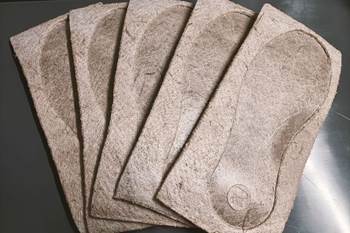Search Results
Showing 561 – 570 of 1113 results
Composite materials are engineered combinations of two or more distinct materials, merging their individual properties to create a new material with enhanced characteristics. Typically composed of a reinforcing phase (like fibers or particles) embedded within a matrix (often a polymer, metal, or ceramic), composites leverage the strengths of each component to achieve superior strength, stiffness, lightness, or other desirable attributes. Their versatility extends across industries, from aerospace and automotive to construction and sports equipment, where their tailored design and exceptional properties offer solutions for high-performance applications.
Recycling in composites manufacturing is an evolving endeavor aimed at addressing sustainability challenges. Unlike traditional materials, composites often pose recycling complexities due to their multi-component nature. However, innovative techniques are emerging to tackle this issue. Methods like pyrolysis, mechanical recycling, and chemical processes are being developed to efficiently recover valuable components from composite waste, such as fibers or matrix materials.
Gift your boss, coworker, employees, family members or even yourself this holiday season with one of these 20 composites-related ideas.
Evonik and partners’ glass fiber-reinforced epoxy SMC component reduces battery housing weight by ~10%, ensures suitability for all vehicle size and class.
IACMI chief technology officer Uday Vaidya reflects on IACMI’s role in improving composites’ recyclability and reusability.
CW’s Jeff Sloan checks in with JEC innovations from Solvay, A&P, Nikkiso, Voith, Hexcel, KraussMaffei, FILL, Web Industries, Sicomin, Bakelite Synthetics, Westlake Epoxy and Reliance Industries.
Highly-aligned, short-fiber Tailorable Universal Feedstock for Forming achieves aerospace properties, metal-like formability in zero-waste, fiber-to-parts pilot plant.
Plastics and composites manufacturers will benefit from Roctool’s heat and cooling induction for molding processes, with increased technical service support and capability demonstrations on a global scale.
Lifecycle assessment, starting at Toray’s Nijverdal site and then broadening to U.S. locations, will provide reliable emissions data to customers purchasing the range of thermoplastic composite materials.
Project uses network of DEA, temperature/pressure and ultrasonic sensors plus digital simulation and AI modeling to monitor and optimize injection of caprolactam into complex glass fiber preform and in-situ polymerization of PA6.
All signs point to increasing demand from many market sectors. Will capacity keep pace?









